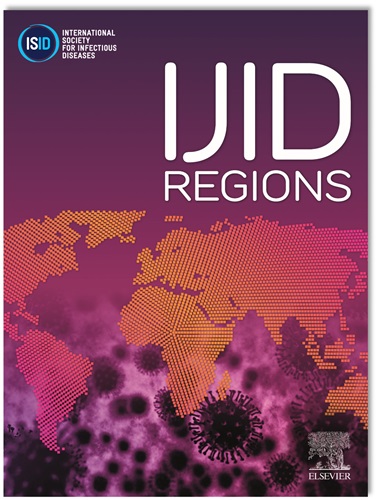One-year mortality of tuberculosis patients on isoniazid-based treatment and its association with rapid acetylator NAT2 genotypes
IF 4.3
2区 医学
Q1 INFECTIOUS DISEASES
引用次数: 0
Abstract
Background
NAT2 polymorphisms affect isoniazid metabolism, but their effect on mortality among individuals with tuberculosis (TB) remains unclear.
Methods
This study used data from two TB cohorts (2005–2011, 2014–2020) and death certificate records in Thailand. Newly diagnosed Thai individuals treated with isoniazid-containing regimens were included. NAT2 genotypes—rapid, intermediate, and slow acetylator (RA, IA, SA)—were classified via haplotype inference. The primary outcome was 1-year all-cause mortality, while secondary outcomes included TB-related mortality, TB+respiratory disease-related mortality recorded in the vital registration system, and death as a TB treatment outcome. Adjusted hazard ratios (aHRs) relative to the IA type were estimated using stratified Cox proportional hazards models. Subgroup analyses targeted individuals with isoniazid-resistant TB and HIV infection.
Results
A total of 1,065 individuals (766 males; mean age=51 years) were analyzed. Individuals with RA had a 1.70-fold greater all-cause mortality risk (95 % CI: 1.03–2.80) than IA. The aHRs for RA were 1.14 (0.43–3.03) for TB-related mortality, 1.59 (0.80–3.18) for TB+respiratory disease-related mortality, and 1.26 (0.67–2.37) for TB treatment outcome death. Among individuals with isoniazid-resistant TB, those with RA had a 4.68-fold (1.14–19.12) greater aHR for all-cause mortality.
Conclusion
The RA type is associated with increased 1-year all-cause mortality.
异烟肼治疗结核病患者一年死亡率及其与快速乙酰化剂NAT2基因型的关系
背景:NAT2多态性影响异烟肼代谢,但其对结核病(TB)患者死亡率的影响尚不清楚。方法:本研究使用了泰国两个结核病队列(2005-2011年、2014-2020年)和死亡证明记录的数据。新诊断的泰国患者接受含异烟肼方案治疗。通过单倍型推断将NAT2基因型分为快速、中间和缓慢乙酰化(RA、IA、SA)。主要结局是1年全因死亡率,次要结局包括结核病相关死亡率、生命登记系统中记录的结核病+呼吸系统疾病相关死亡率,以及作为结核病治疗结局的死亡。使用分层Cox比例风险模型估计相对于IA类型的调整风险比(aHRs)。亚组分析针对异烟肼耐药结核病和HIV感染的个体。结果:共捕获1065只(雄766只;平均年龄51岁)。RA患者的全因死亡风险比IA高1.70倍(95% CI: 1.03-2.80)。结核病相关死亡率的RA ahr为1.14(0.43-3.03),结核病+呼吸道疾病相关死亡率的ahr为1.59(0.80-3.18),结核病治疗结果死亡的ahr为1.26(0.67-2.14)。在耐异烟肼结核患者中,RA患者全因死亡率的aHR高出4.68倍(1.14-19.12)。结论:RA类型与1年全因死亡率增高有关。
本文章由计算机程序翻译,如有差异,请以英文原文为准。
求助全文
约1分钟内获得全文
求助全文
来源期刊
CiteScore
18.90
自引率
2.40%
发文量
1020
审稿时长
30 days
期刊介绍:
International Journal of Infectious Diseases (IJID)
Publisher: International Society for Infectious Diseases
Publication Frequency: Monthly
Type: Peer-reviewed, Open Access
Scope:
Publishes original clinical and laboratory-based research.
Reports clinical trials, reviews, and some case reports.
Focuses on epidemiology, clinical diagnosis, treatment, and control of infectious diseases.
Emphasizes diseases common in under-resourced countries.

 求助内容:
求助内容: 应助结果提醒方式:
应助结果提醒方式:


